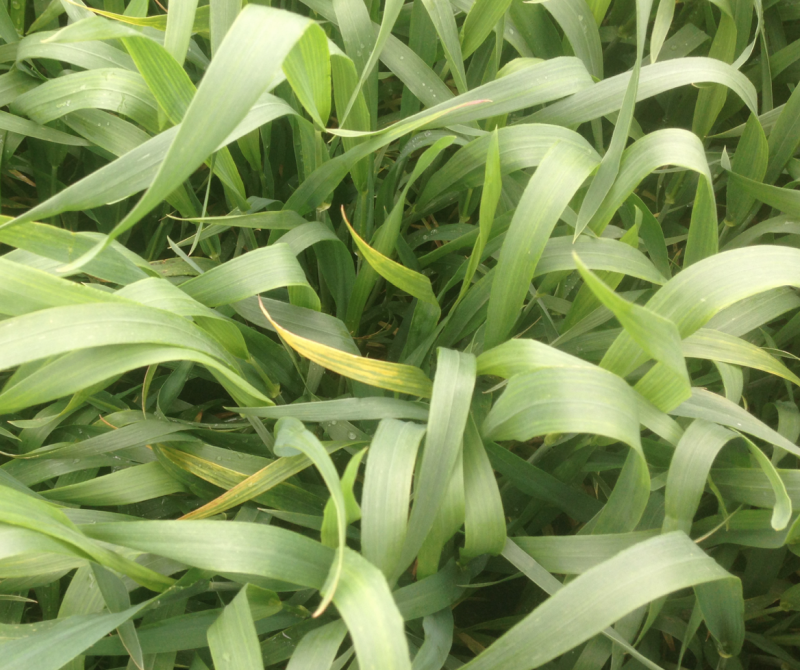
Originally Published: May 25, 2017
Originally written with contributions by Emmanuel Byamukama, former SDSU Extension Plant Pathologist.
Barley yellow dwarf is starting to develop in winter wheat. Barley yellow dwarf is caused by the Barley yellow dwarf virus (BYDV). This disease usually becomes more distinct at flag leaf emergence. A typical symptom of Barley yellow dwarf is the purplish-yellow color of infected leaves, especially the flag leaf. Advanced symptoms include severe yellowing of infected leaves and sometimes the infected leaf may have the top half killed starting from the leaf tip.
Transmission
Barley yellow dwarf virus is transmitted by aphids. In South Dakota, BYDV is transmitted by three aphid species: bird cherry oat aphid (Rhopalosiphum padi), English grain aphid (Sitobion avenae), and greenbug (Schizaphis graminum). Because of the different aphid vectors, BYDV can have several strains. There are three main strains transmitted by the three vectors above: BYDV-MAV strain is mainly transmitted by English grain aphid; BYDV-PAV is mainly transmitted by bird cherry oat aphid, while BYDV-SGV is mainly transmitted by the greenbug.
Management
Unfortunately, no in-season treatments can be applied for plants already infected with BYDV. For future seasons, delaying the time of planting in the fall can help wheat escape infection. Infections which take place in the fall cause more yield loss than spring infections. Insecticide seed treatments reduce BYDV transmission in the fall. However, insecticide seed treatment will not provide protection against spring infections in winter wheat. Information on insecticide seed treatments is found in the 2017 South Dakota Pest Management Guide: Wheat.

